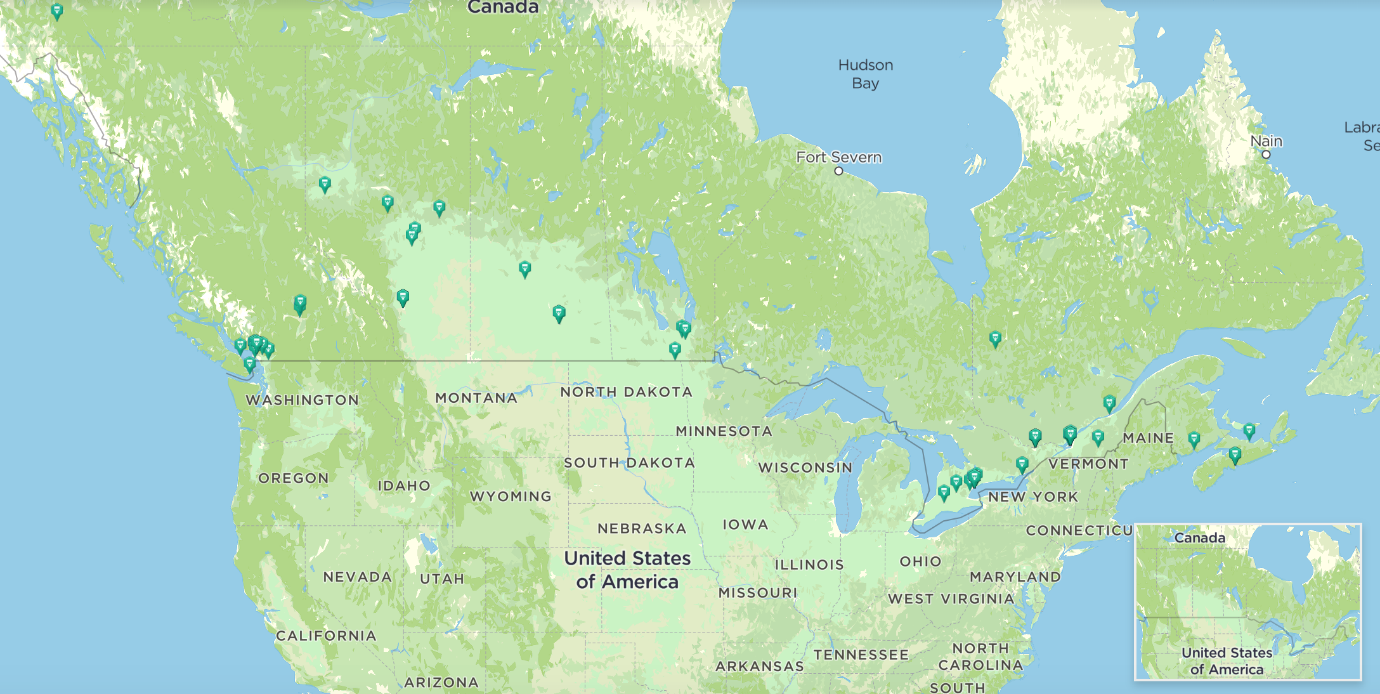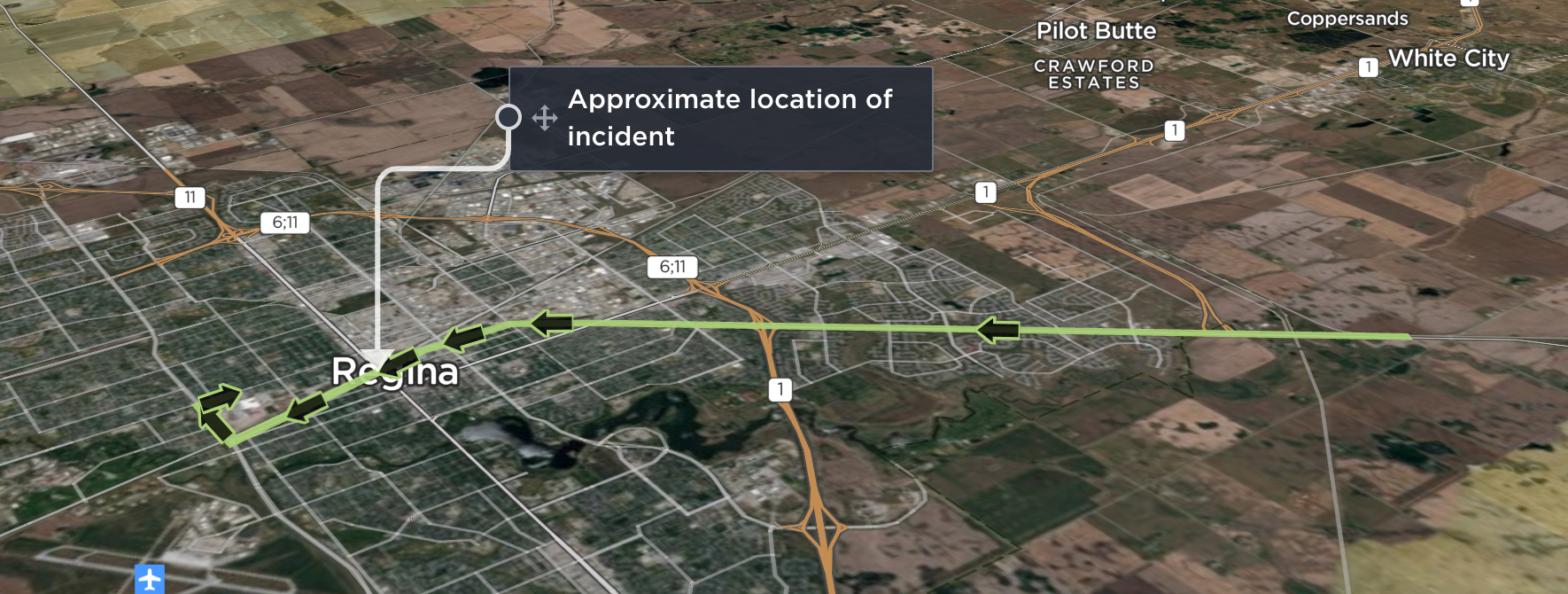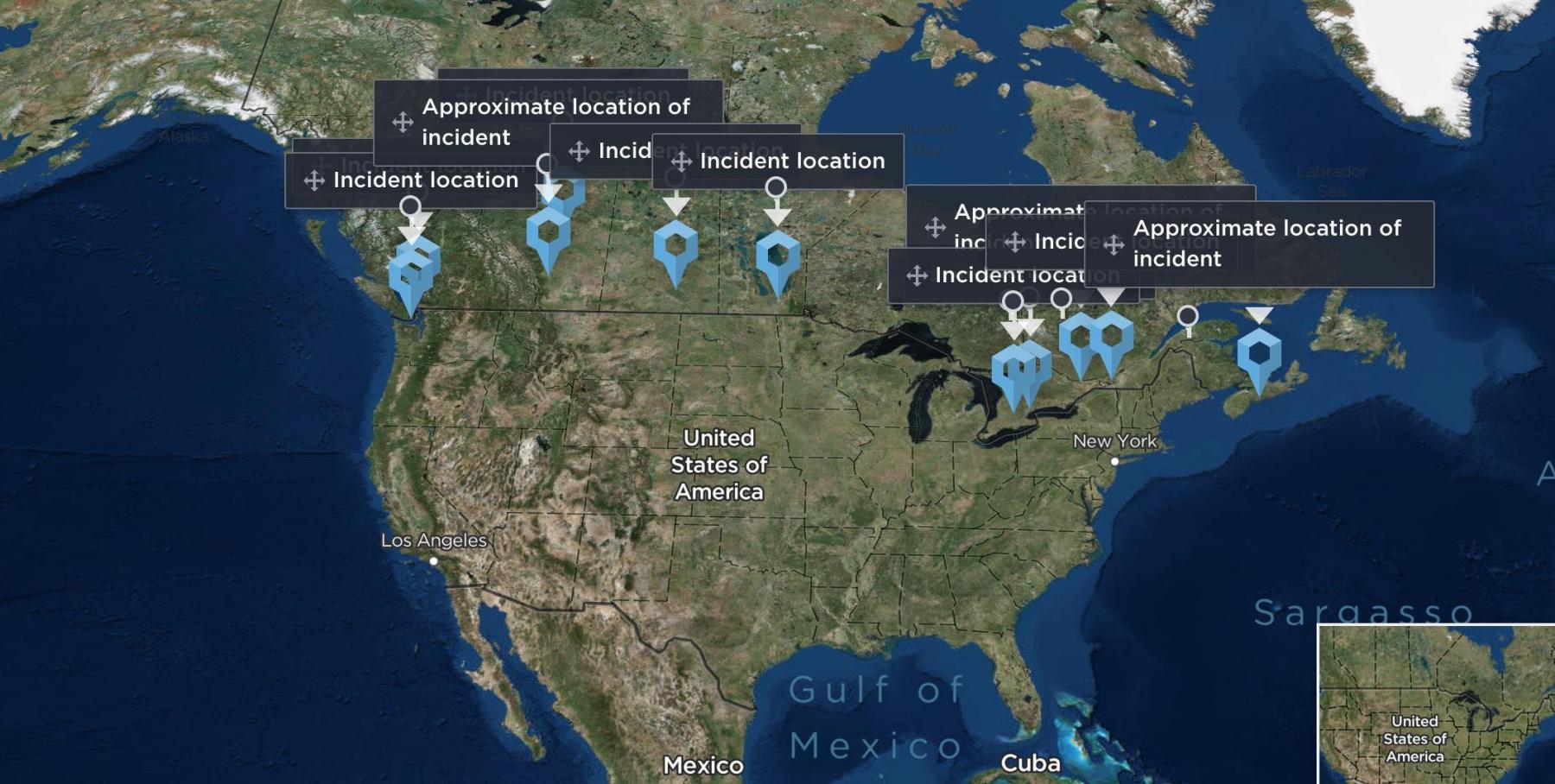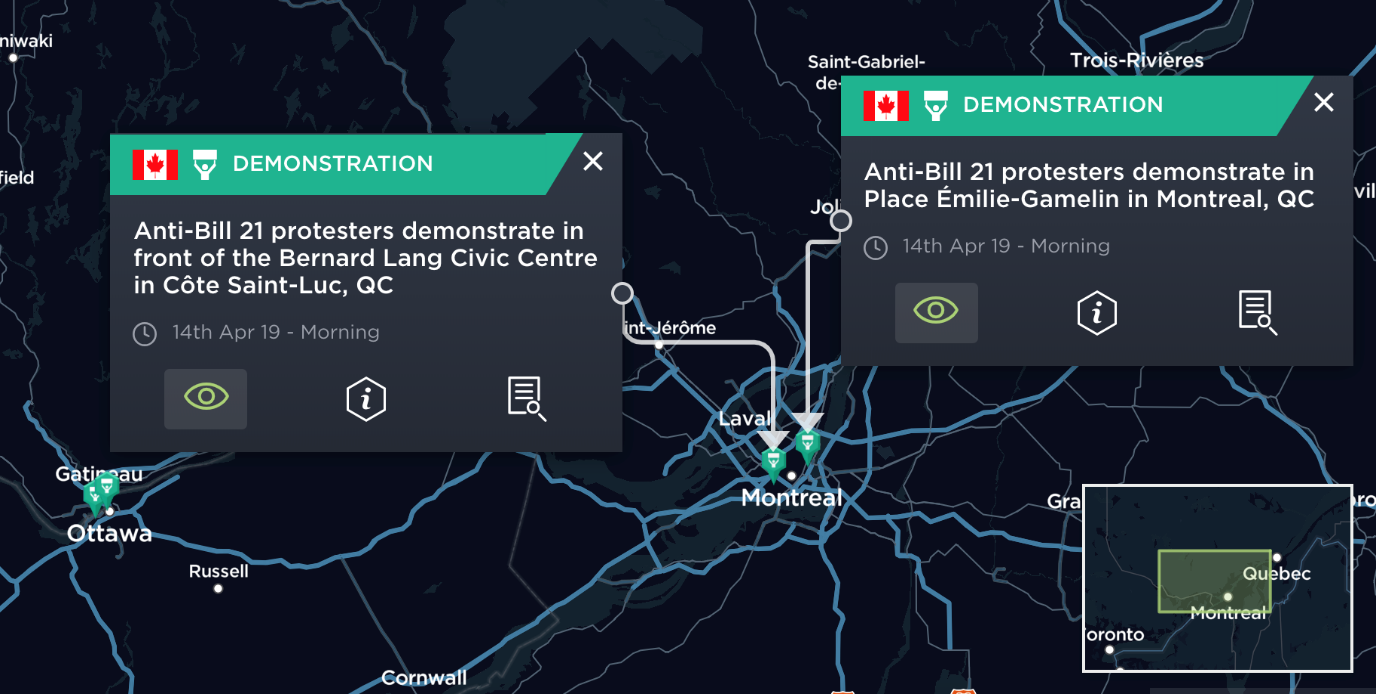Can the Recent Protests in Canada Predict the Polls?
This October, Canadians will take to the polls for the 2019 Federal Elections. At present, competition between the Liberal and Conservative parties remains strong with some polls suggesting that the Conservative Party could overtake the Liberals in the popular vote.
The response of the present Liberal government to issues voiced by Canadians across the state is likely to be a deciding factor in whether they can retain their majority. A wide range of topics are on the agenda.
During the last two months demonstrations have taken place around global environmental movements, provincial political developments and issues regarding freedom of religious expression. These have not been confined to Canada’s major metropolitan areas; resource extraction regions and local school districts have been amongst affected areas. As electoral campaigning is underway, it would be appropriate to assume that frequency and intensity of protest events will continue to increase, with ramifications for affected industries and organisations.

The 2019 Alberta General Election highlighted the presence of a range of conflicting movements in light of political affairs. On the 16th April, the Jason Kenney-led United Conservative Party (UCP) gained 54.8% of the popular vote, reducing the former leading New Democratic Party (NDP) to official opposition. Kenney has proved to be a controversial figure, threatening to cut the supply of Alberta’s oil to British Columbia (Bill-12) following a dispute over the British Columbian government’s opposition to the expansion of the Trans-Mountain pipeline.
However, in terms of protests, Kenney’s victory has also had notable social ramifications. A group of Calgary-based students have announced their plans for an Alberta-wide protest in light of Kenney’s comments on an education act. The move would remove the prohibition on the notification of parents when students join gay-straight alliances (peer support groups for LGBTQ students). A 20-minute-long school walkout was planned for the 3rd May, with hundreds of Alberta students taking part.
However, Kenney’s pro-oil extraction stance has resonated with many Albertans who have vocally expressed an opposition to the Trudeau Administration’s implementation of Bill C-69. This legislation seeks to overhaul the means through which major infrastructure projects are reviewed and approved. In particular, the extraction industry workforce has expressed concern that this could lead to the rejection of projects and thus job losses through the granting of wider consultative powers to a range of stakeholders. Protesters recently gathered outside a Calgary hotel where Senate hearings for Bill C-69 were taking place, chanting statements such as “Build that [oil] pipeline”.
In contrast, climate protesters were also active during hearings over Bill C-69, with groups such as the ‘Concerned Citizens of Manitoba’ and ‘Wilderness Alliance’ attempting to stage an alternate hearing for the legislation after they were removed from a senate hearing in Winnipeg. No arrests took place during the protests, and no counter-demonstrations met the opposing groups from either Manitoba or Alberta.

While Bill C-69 has now been passed, the environmental agenda remains a central issue within Canadian politics and activism. Controversy over the Trudeau Administration’s implementation of a Carbon Tax is likely to be an agenda item at the forefront of the upcoming elections.
Like Alberta, Saskatchewan holds significant oil reserves and has been the location of anti-Carbon Tax marches. On the 4th April, the ‘Regina Rally Against the Carbon Tax’ convoy began in Estevan before passing through Regina and ending with a rally at the Queensbury Center. Some 800 oil field service trucks and other industrial vehicles were driven along the route and adorned with anti-Bill C-69 and Carbon Tax signs as attendees voiced concern over the threat of rising fuel costs and potential job losses in the oil and natural gas sectors.
While many protesters were quick to remark that they were not ‘climate change deniers’, instead being in favour of other measures such as carbon capture, in Toronto, some protesters expressed opposition under more direct terms.

Protesters associated with the now-international ‘Yellow Vests’ movement heckled Prime Minister Justin Trudeau during a recent funding speech, accusing him of “pandering to minorities” over the Administration’s carbon measures. A series of planned Yellow Vests protests were listed on the Yellow Vests Canada website due to take place on the 27th April, although it has not proved possible to verify whether the rallies took place. With this in mind, it is likely protests will intensify across Canada in the run up to elections and will not be confined to major metropolitan centres.
In contrast, global climate activist movements have taken hold throughout Canada, receiving strong support from a base of school students. On the 14th March over 50 school climate strike events were planned for Canada. Participating students walked out of classes and many took part in rallies.
Vancouver was the location of one of the largest rallies, with around 2000 students gathering outside Vancouver City Hall and writing slogans on the pavement in chalk. The protest was not specifically targeted at business corporations, rather it addressed global leaders in a call to increase climate change mitigation efforts.
More recently, Extinction Rebellion demonstrations have taken place in major metropolitan areas. A protest in Toronto resulted in participants flying banners above the Gardiner Expressway before marching through Parkdale on the 20th April. Like the school climate strike, protesters aimed to show solidarity with Extinction Rebellion activists around the world and made demands calling for the Canadian government to provide transparency over the ‘climate and ecological emergency’ and introduce legally binding measures to reduce carbon output. A similar demonstration was held on the 15th April in Ottawa.
In contrast, a smaller march led by the Extinction Rebellion Vancouver Island group in Victoria specifically targeted the Banking Sector who were accused of investing in fossil fuels. A rally was staged outside a branch of ScotiaBank and a few protesters were seen stringing yellow caution tape across the entrance to a Bank of Montreal branch on Douglas Street and cutting up plastic bank cards outside branches of the RBC Royal Bank and TD Canada Trust. Nevertheless, while protesters managed to shut down local streets only around 100 people were in attendance and the rally was regulated by a police presence.
On the 28th April, climate protests broke out across Quebec, with a major rally being held in Montreal. Protesters gathered at Place des Festivals, Parc Laurier and Parc La Fontaine before marching to the foot of Mount Royal. Students, union members and politicians were amongst the participants carrying banners calling for a zero-carbon society and declaring that the world is experiencing a ‘climate emergency’.
Simultaneous protests occurred in Sherbrooke, Trois-Rivières, Rimouski, Rouyn-Noranda, Alma, Gaspé and Mont-Laurier. Aside from causing minor travel disruption, these demonstrations were largely directed at domestic and national governments rather than corporations.
With major Extinction Rebellion protests concluding on the 20th April in London, actions of the Canadian following are likely to subside. However, further climate demonstrations are planned, including a ‘Climate Picnic’ to were held in Pits Park, Toronto, on the 5th May and a National School Strike for Climate with associated rallies held on the 3rd May.
Ongoing flooding across Quebec is also likely to provide a backdrop to those demanding climate action; this issue may feature in upcoming protests having directly affected a large fraction of the province’ population. Consequently, climate activism looks to be a recurring trend in the lead up to the federal election, particularly amongst student activists.

In Quebec, the Coalition Avenir Québec Administration has generated recent controversy over Bill 21. The legislation could ban certain public sector workers from wearing religious symbols while at work by mid-June. Two protests broke out in Montreal and Cote Saint-Luc on the 14th April, both of which were attended by councillors, religious leaders and government representatives in addition to residents of the cities. Hearings for the bill are due to occur in May and further protests may break out over the issue at the locations where they take place.

Forecast
Over the coming months climate protests look likely to continue and expand in scope. Increasingly, these movements have been associated with global climate activities such as the Extinction Rebellion protests and School Climate Strikes, placing importance on an international focus when predicting the scale and aims of action.
Regional disputes over oil pipeline expansions and project regulation could draw conflict with climate activists, although the majority of large-scale climate rallies have been staged in provinces with lower levels of resource extraction and employment in extractive industries. Equally a localised context should not be ignored as province-based demonstrations are not infrequent and can become heated.
Intelligence Fusion is closely monitoring the protests and how they’ll develop in the lead up to the elections in Canada. You can follow us on Twitter for regular updates, or subscribe to our newsletter for alerts sent directly to your inbox.